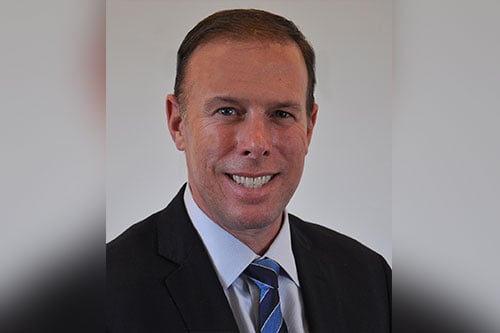

As home values escalate, building costs skyrocket and supply chain disruptions persist, John Dickson (pictured), CEO and president of Aon Edge, is urging homeowners to reassess their flood insurance to ensure they have enough coverage to address the rising costs of construction and replacement cost values.
“In this inflationary period, if our financial vehicles and our insurance vehicles are not kept current, there will be exposure, and often, that exposure falls at the doorstep of homeowners,” said Dickson. “If the replacement cost of the home is not being monitored, if agents aren’t looking to make sure that the limits being purchased adequately protect the asset at its value today, not how it was valued yesterday, the homeowner could be left holding the bag if a bad event happens – and unnecessarily so.
“Most insurance losses are not total losses; most are partial losses. And so, when you’re building a price for a property insurance program, the damage ratios are supremely important – ensuring that you understand the ratio of exposure to coverage purchased. If the coverage amounts are depressed because of an outdated view of replacement costs, that skews the ratios meaning that the price is no longer adequate. It also compromises the ability for the insurance product to perform. Having a current understanding of what things cost today is essential to having insurance that can work for everybody.”
Read next: Millions to pay more for flood insurance
Aon Edge is a division of Aon, and it provides customizable private flood insurance in the United States, with the aim of making flood insurance accessible to all insurance agents and property owners. The firm predicts that about 40% of homes currently insured by the National Flood Insurance Program (NFIP) are valued above the FEMA-managed program’s $250,000 coverage limit. That means that almost half of the homes covered by the NFIP have flood exposures that are beyond what the federal program can protect against.
“The fault, in my opinion, lies with the very essence of the NFIP,” said Dickson. “The fact that this is a federal program, which is administered, run, and managed by the federal government means that it is a slow moving, bureaucratic creature. And that slow-moving bureaucracy means that it doesn’t have the ability to respond to the changing times. That value of $250,000 was set years ago. I don’t think it’s changed for well over a decade, but things [home values, inflation, etc.] are changing rapidly every day.”
There have been proposals to increase the insured limit of the NFIP up to $500,000, which is the current limit available to commercial properties insured under the program. However, Congress is yet to make meaningful reforms to the program. Instead, lawmakers have approved a long series of short-term extensions to keep the NFIP alive until appropriate changes can be made.
Homeowners do not have to self-insure their flood exposure if the value of their home exceeds the NFIP’s $250,000 cap. There are alternative options available via the private flood insurance market.
“Specific to this issue, the private market is leading the charge in two ways,” Dickson told Insurance Business. “Private primary residential flood insurance generally does not stop at $250,000. For the program that we [Aon Edge] have the privilege of delivering to 50,000 people around the country, we offer limits of well over a million dollars, which covers most of the homes in the country.
“We also have - and this is fairly common and fairly established in the private sector - multiple excess flood insurance solutions. There are solutions that can sit above the NFIP. If the NFIP is capped at $250,000, the home is worth $800,000, and the homeowner is not willing to bear the risk from $250,000 to $800,000, they can buy excess flood insurance as well to sit on top of the NFIP and then transfer that risk of loss to the insurance community.”
The private excess flood insurance solutions are more mature than private primary flood insurance products. Many are ‘form following,’ meaning they don’t need a separate insurance contract and they can sit on top of NFIP coverage in a streamlined manner. This has helped to reduce the coverage gap for some of the most flood-exposed policyholders across the country.
“The private flood insurance marketplace is also doing an exceptional job in terms of writing new business,” Dickson added. “The overall population of homes insured for flood is increasing. Our communities still have exposures that they need to consider and think about solutions for, but we are seeing an uptake across the country and across all solutions with respect to the number of homes insured against flood. That growth is coming almost entirely from the private marketplace. It is growing at an incredible rate.”
